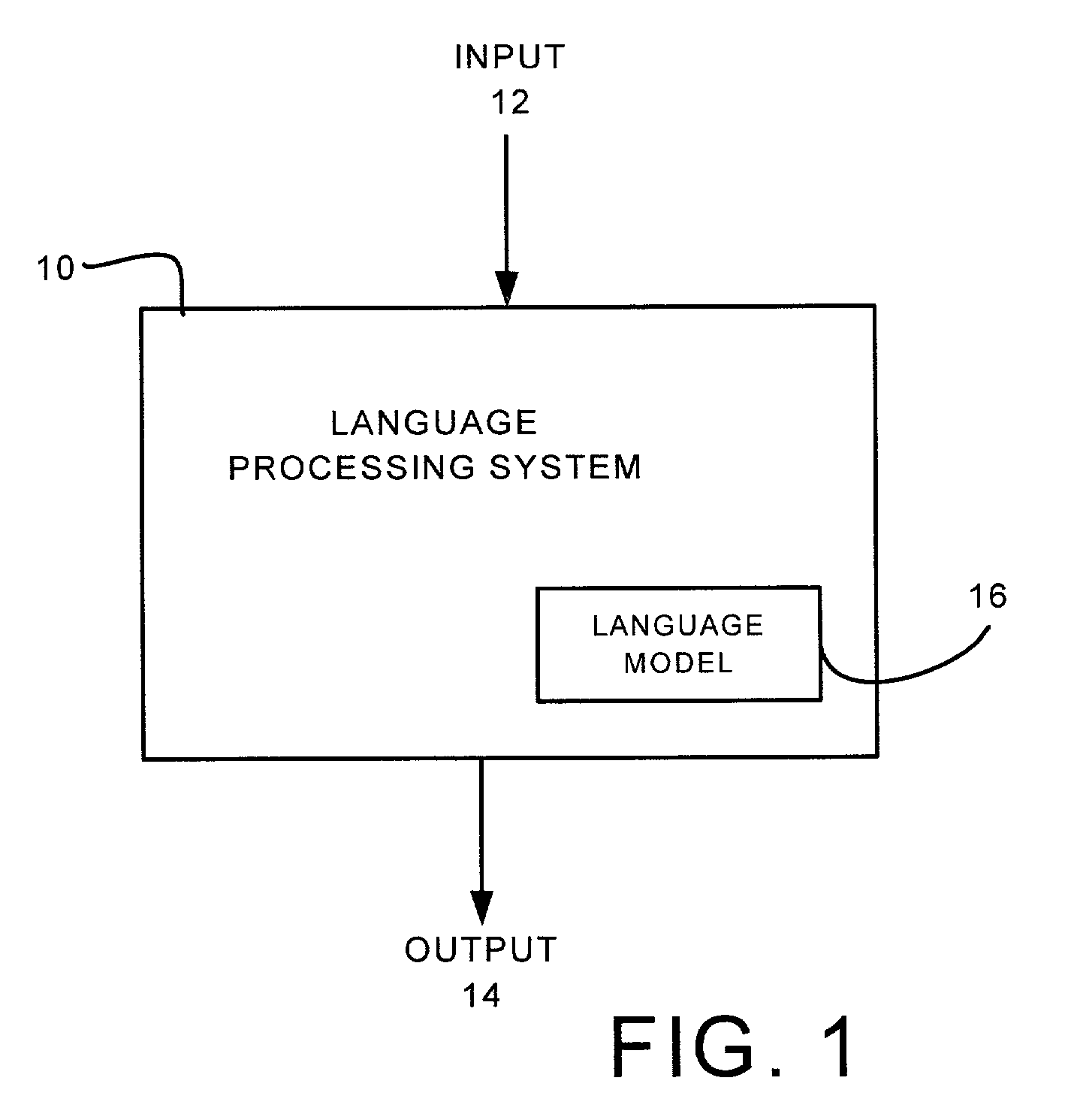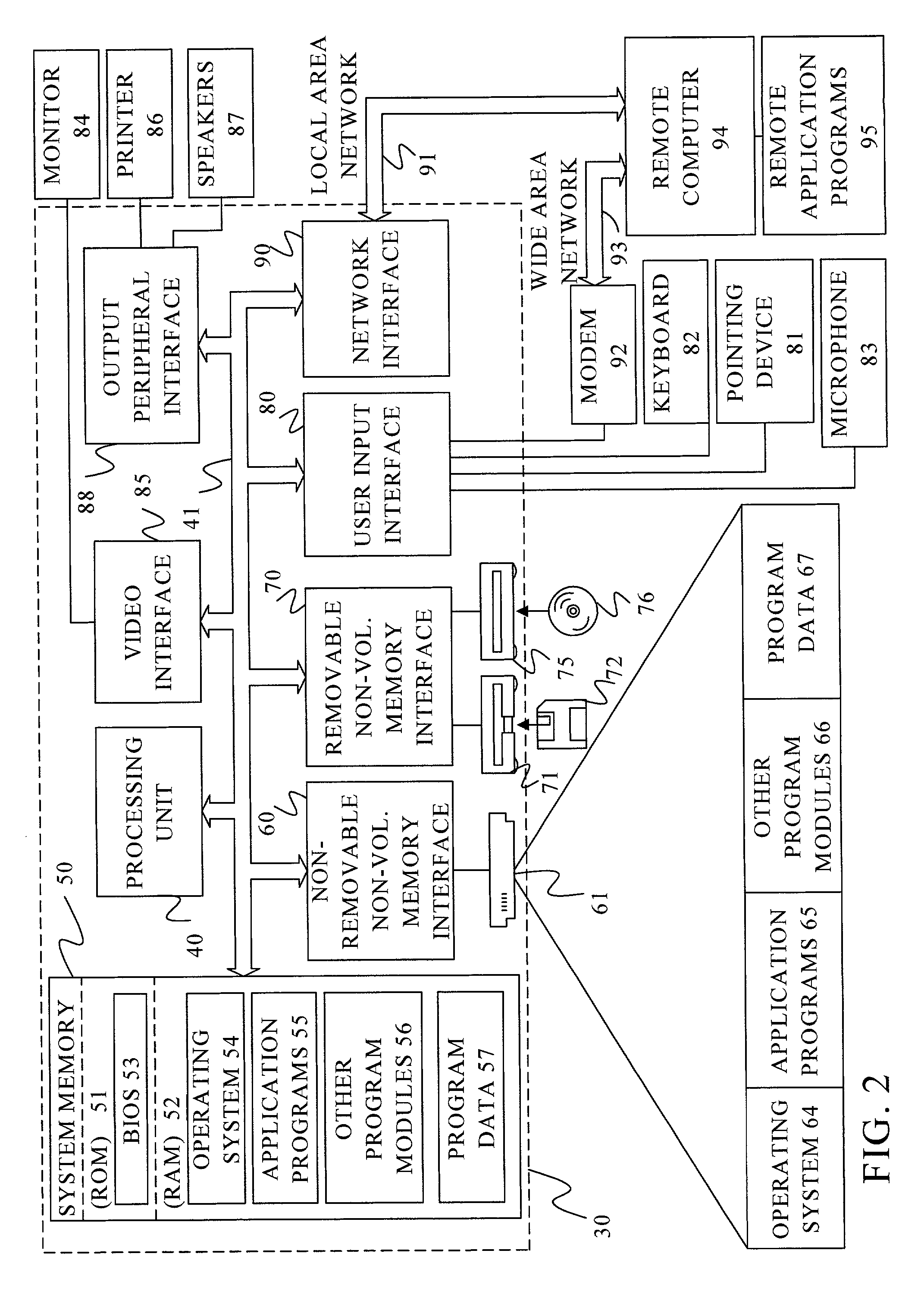Disambiguation language model
a language model and disambiguation technology, applied in the field of language modeling, can solve the problems of ambiguity problems, homonyms can create significant errors, and the speech recognizer typically performs unsatisfactory, and achieves the effect of improving accuracy
- Summary
- Abstract
- Description
- Claims
- Application Information
AI Technical Summary
Benefits of technology
Problems solved by technology
Method used
Image
Examples
Embodiment Construction
[0015] FIG. 1 generally illustrates a language processing system 10 that receives a language input 12 and processes the language input 12 to provide a language output 14. For example, the language processing system 10 can be embodied as a speech recognition system or module that receives as the language input 12 spoken or recorded language by a user. The language processing system 10 processes the spoken language and provides as an output, recognized words and / or characters typically in the form of a textual output.
[0016] During processing, the speech recognition system or module 10 can access a language model 16 in order to determine which words, and in particular, which homonym or other similar sounding elements of a language have been spoken. The language model 16 encodes a particular language, such as English, Chinese, Japanese, etc. In the embodiment illustrated, the language model 16 can be a statistical language model, such as an N-gram language model, a context-free grammar,...
PUM
 Login to View More
Login to View More Abstract
Description
Claims
Application Information
 Login to View More
Login to View More - R&D
- Intellectual Property
- Life Sciences
- Materials
- Tech Scout
- Unparalleled Data Quality
- Higher Quality Content
- 60% Fewer Hallucinations
Browse by: Latest US Patents, China's latest patents, Technical Efficacy Thesaurus, Application Domain, Technology Topic, Popular Technical Reports.
© 2025 PatSnap. All rights reserved.Legal|Privacy policy|Modern Slavery Act Transparency Statement|Sitemap|About US| Contact US: help@patsnap.com



